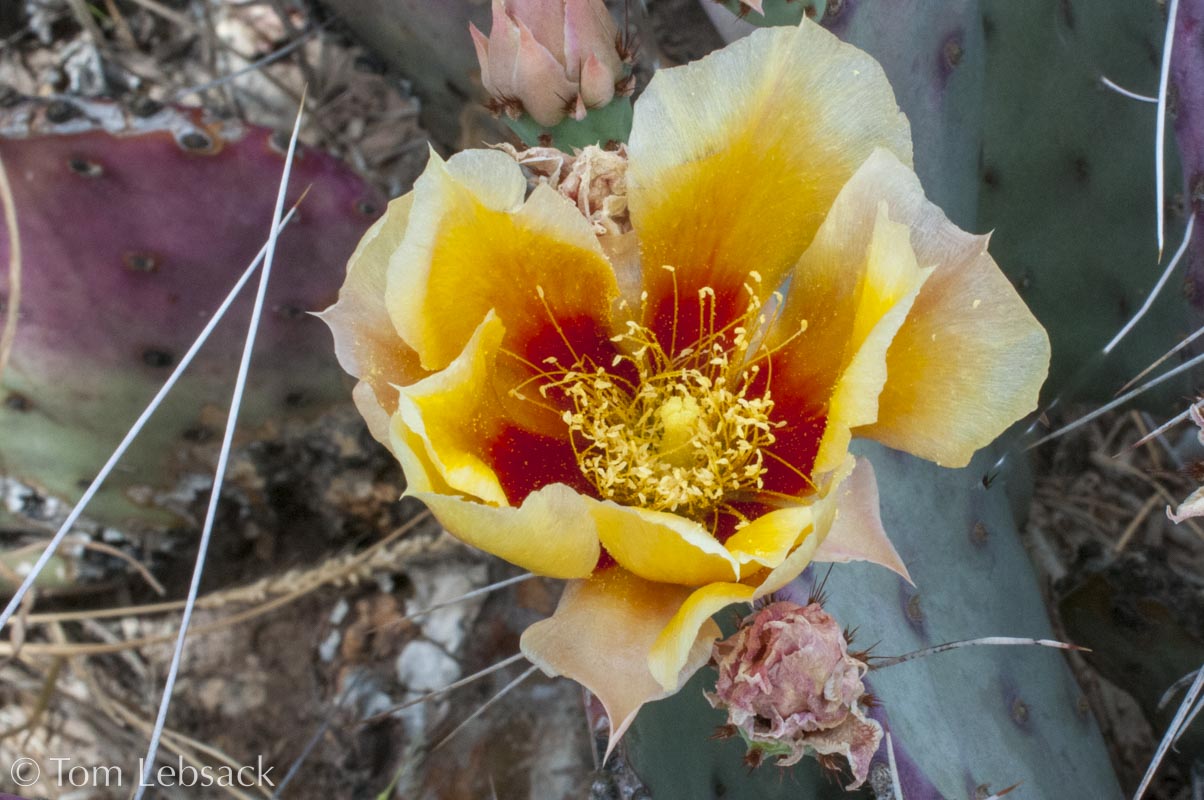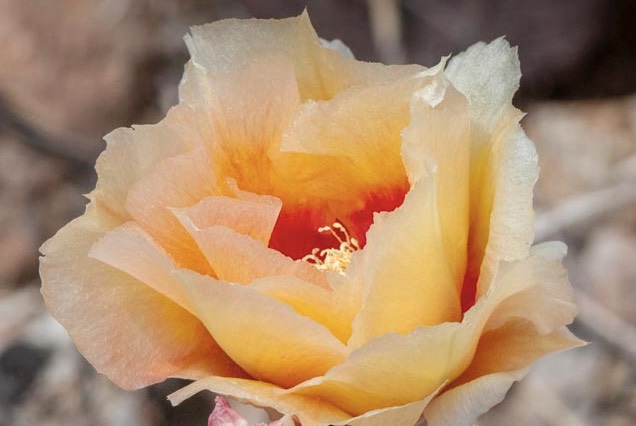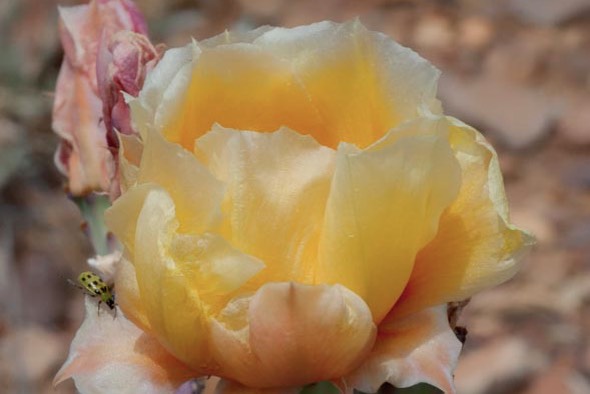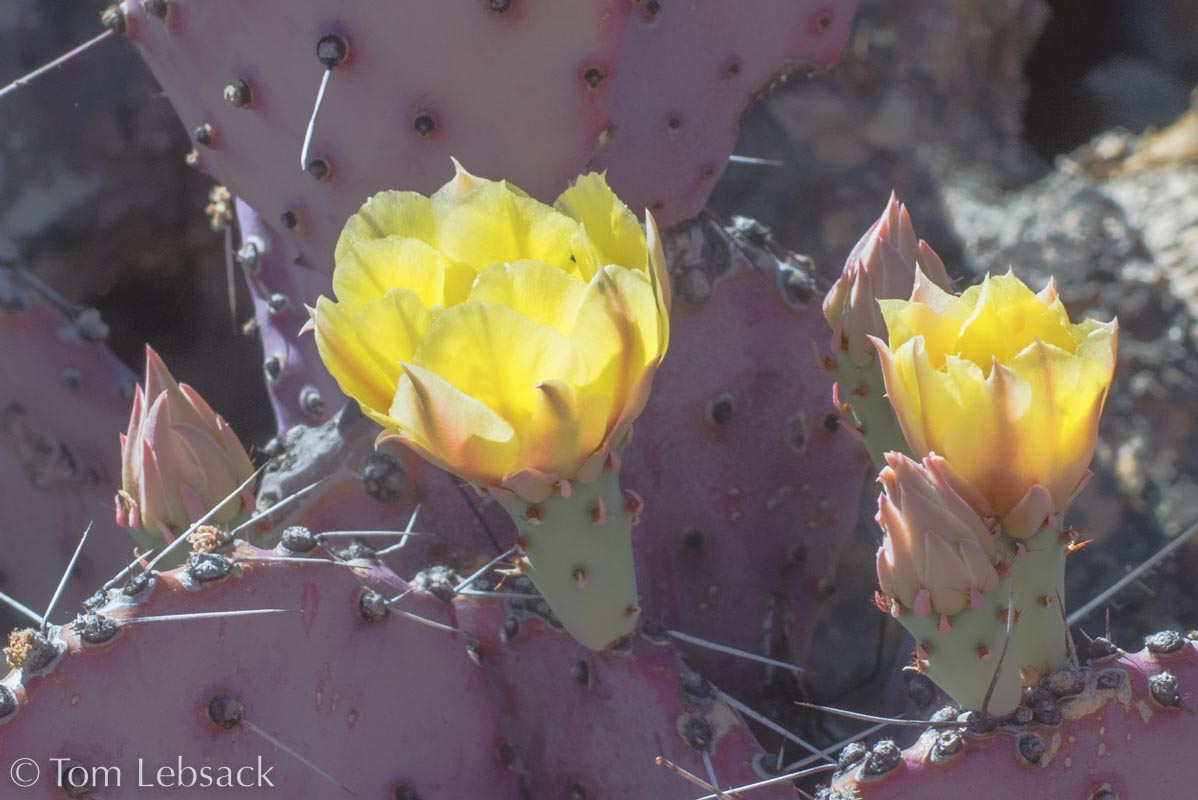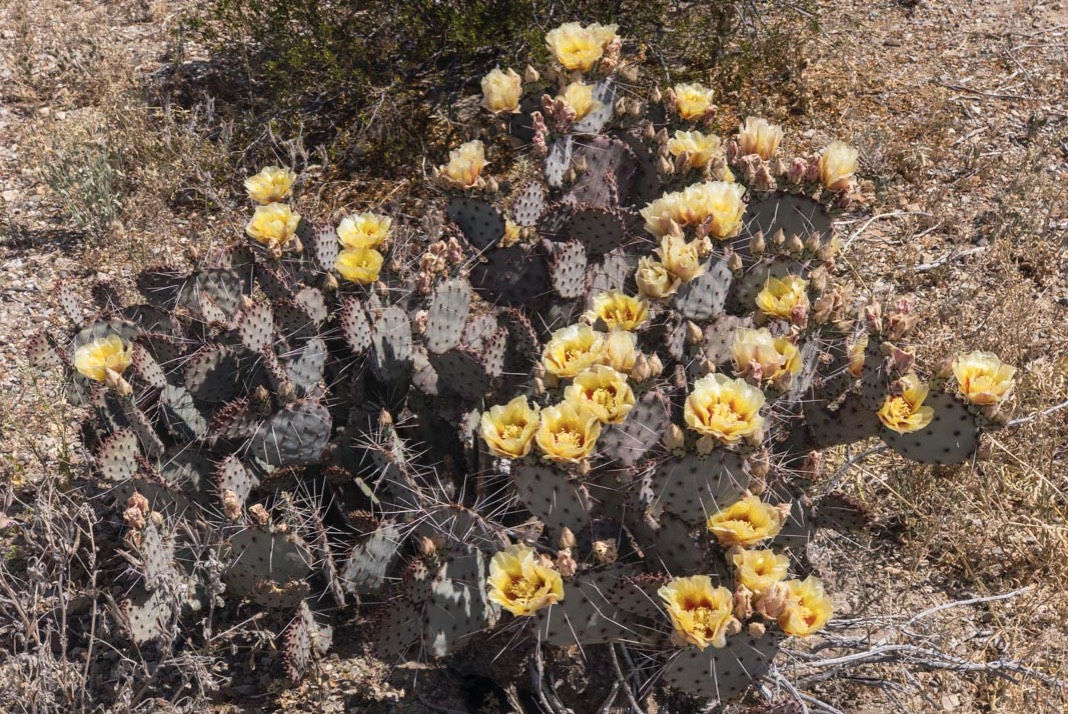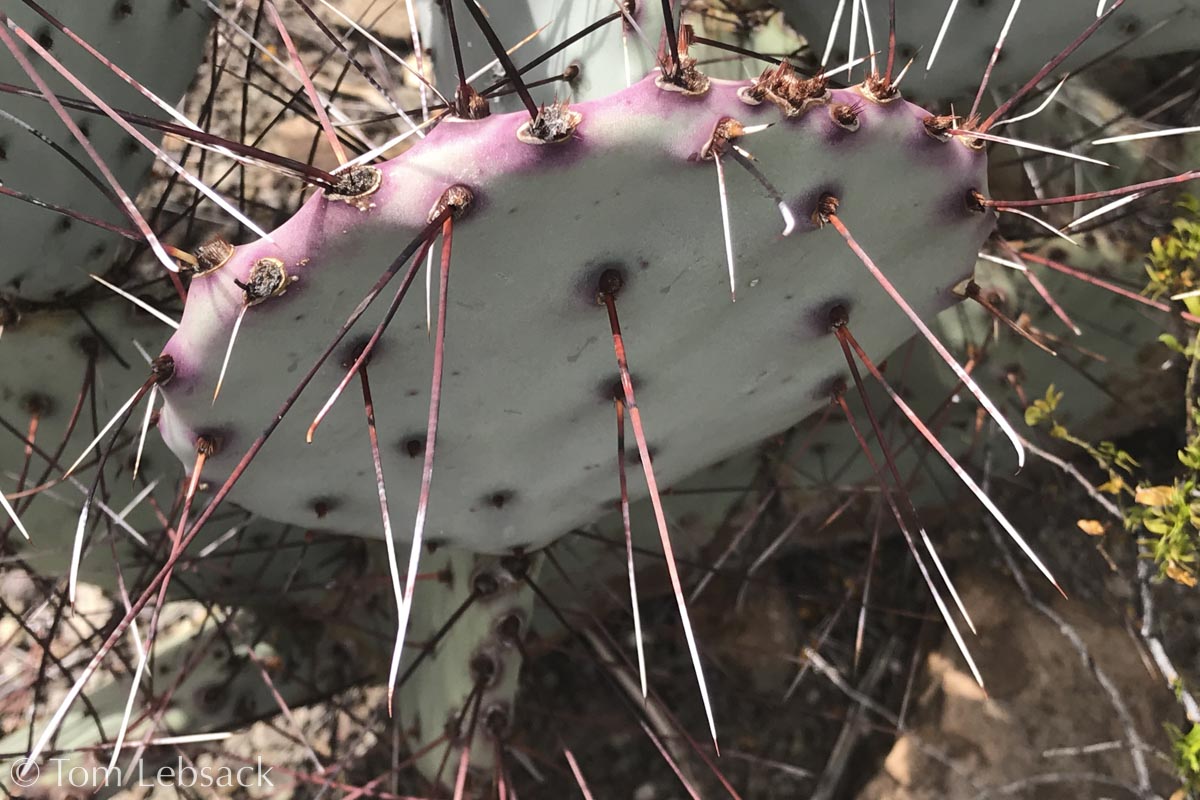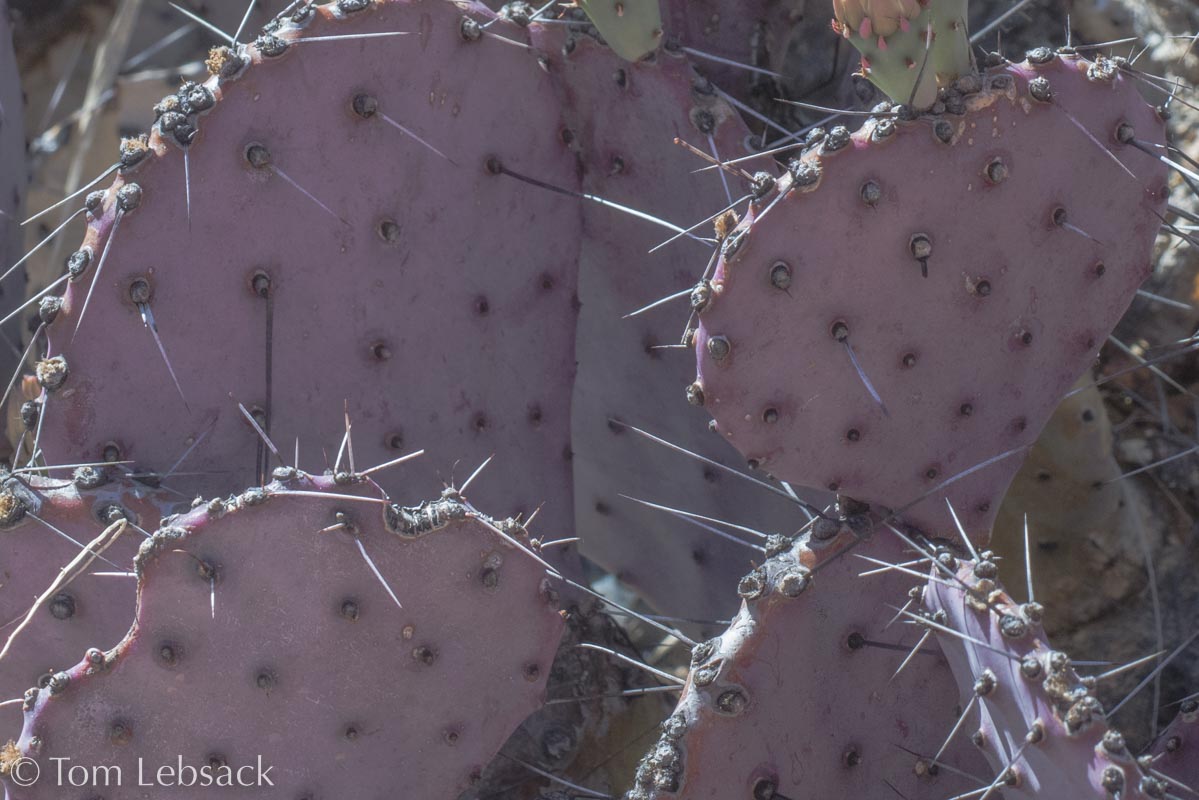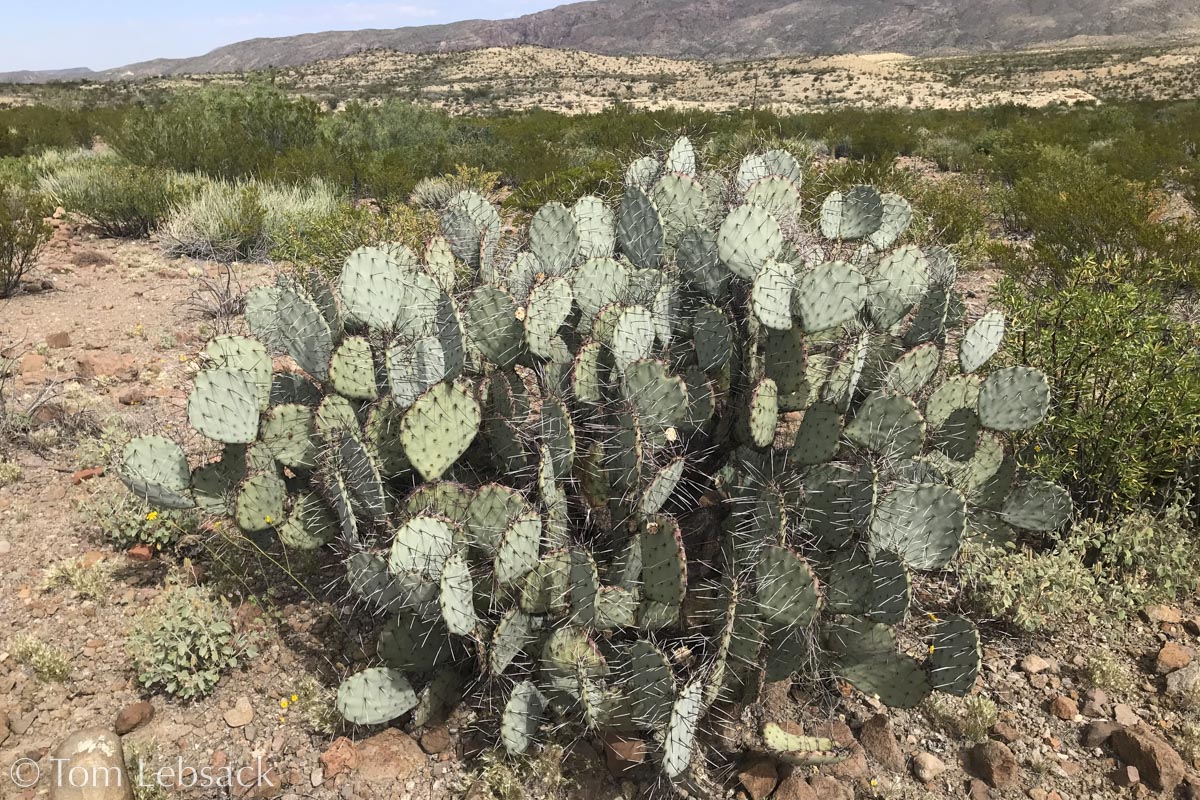Texas Wildbuds
Opuntia azurea var. parva
(Big Bend Purplish Prickly Pear)
| Scientific Name | Opuntia azurea var. parva | USDA PLANTS Symbol | N/A |
| Common Name | Big Bend Purplish Prickly Pear | ITIS Taxonomic Serial No. | N/A |
| Family | Cactaceae (Cactus) | SEINet Reference |
Click Here |
| Description | Habitat: Desert habitats only in Big Bend area from 1900 to 3700 ft. Plant: Many-branched, sprawling plant 1 to 3 ft high. Pads & Spines: Pale blue-green to bluish-gray pads, upper obovate with tapered bases, lower nearly circular, 3 to 7-1/2 inches long and up to 5-1/2 inches wide; tinged with purple especially around areoles, becoming predominantly purple during droughts. Spines in upper portion and edges of pads, 1 to 3 spines per areole up to 4-3/4 inches long (sometimes longer), black to dark red with white tips. Inflorescence: Young flowers yellow, becoming orange-red by late afternoon; up to 3-1/8 inches across; yellow filaments and anthers, cream-colored style with green stigma lobes. Bloom Period: March to May. Fruit: Pale red to purple, ovate to obovate, 5/8 to 1-1/8-inch long and up to 1 inch across. References: "Cacti of Texas" by Powell, Weedin and Powell. Notes: O. azurea not yet recognized at USDA Plants or ITIS. Previously identified here as O. macrocentra, however, according to the above reference that species does not exist in Brewster County and Big Bend. |
BONAP Distribution MapN/A | Texas Status: NativeEndemic to Big Bend area, common throughout Brewster County |
Banner photo of Castilleja indivisa and Lupinus ssp. taken along FM 1323 north of Johnson City, Blanco County
© Tom Lebsack 2025
Every attempt is made to provide accurate, up-to-date, and relevant information, but the completeness or accuracy of any information presented on this website cannot be guaranteed. I use authoritative references to insure high standards of accuracy and review and update the information frequently.
